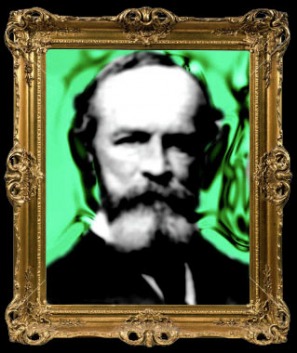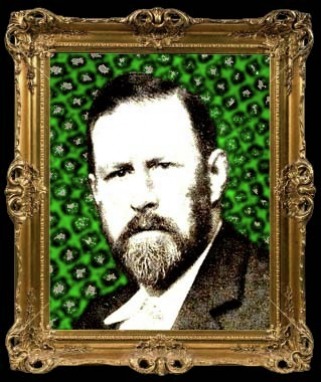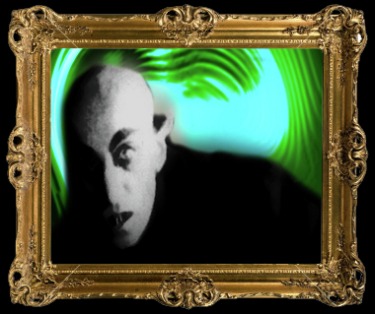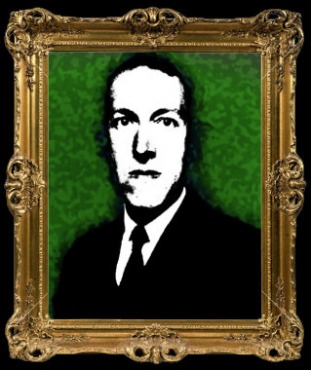
William James
"... our normal waking consciousness, rational consciousness as we call it, is but one special type of consciousness, whilst all about it, parted from it by the filmiest of screens, there lie potential forms of consciousness entirely different. We may go through life without suspecting their existence; but apply the requisite stimulus, and at a touch they are there in all their completeness, definite types of mentality which probably somewhere have their field of application and adaptation. No account of the universe in its totality can be final which leaves these other forms of consciousness quite disregarded"
-- William James, "The Varieties of Religious Experience" (2004), p. 335 --
The literature of parapsychology is becoming increasingly saturated by an emphasis on the role of altered states of consciousness in relation to the experience and manifestation of paranormal phenomena. Indeed, throughout recorded history (and no doubt into the depths of prehistory) humans have utilised altered states of consciousness to commune with the invisible world of the spirits and to harness supernormal powers; for instance the ecstatic journey of the shaman, the trance state of the spirit medium or the common precognitive dream. Altered states of consciousness, whether spontaneous or deliberately induced, appear to be fundamentally intertwined with the paranormal. This relationship between non-ordinary states of awareness and encounters with the numinous is vividly portrayed in the narratives of supernatural fiction. The prevalence of dream associated vocabulary in Bram Stoker's "Dracula" (1897) is a good example:
-- William James, "The Varieties of Religious Experience" (2004), p. 335 --
The literature of parapsychology is becoming increasingly saturated by an emphasis on the role of altered states of consciousness in relation to the experience and manifestation of paranormal phenomena. Indeed, throughout recorded history (and no doubt into the depths of prehistory) humans have utilised altered states of consciousness to commune with the invisible world of the spirits and to harness supernormal powers; for instance the ecstatic journey of the shaman, the trance state of the spirit medium or the common precognitive dream. Altered states of consciousness, whether spontaneous or deliberately induced, appear to be fundamentally intertwined with the paranormal. This relationship between non-ordinary states of awareness and encounters with the numinous is vividly portrayed in the narratives of supernatural fiction. The prevalence of dream associated vocabulary in Bram Stoker's "Dracula" (1897) is a good example:
"Suddenly, away on our left, I saw a faint flickering blue flame. The driver saw it at the same moment; he at once checked the horses and, jumping to the ground, disappeared into the darkness. I did not know what to do, the less as the howling of the wolves grew closer; but while I wondered the driver suddenly appeared again, and without a word took his seat, and we resumed our journey. I think I must have fallen asleep and kept dreaming of the incident, for it seemed to repeat endlessly, and now, looking back, it is like a sort of awful nightmare"

Bram Stoker
We see here Jonathan Harker's inability to distinguish between waking consciousness and dream consciousness. In the midst of a supernatural experience such distinctions seemingly break down or dissolve, plunging the experiencer into a state of anti-structural perception - a new way of seeing and being in the world whereby the rational laws of nature are inverted, or at least modified, so that the apparently impossible becomes possible. Harker is similarly unable to distinguish between dream and reality when recalling his terrifying encounter with Dracula's three sexy vamps:
"I suppose I must have fallen asleep; I hope so, but I fear, for all that followed was startlingly real - so real that now, sitting in the broad, full sunlight of the morning, I cannot in the least believe that it was all sleep."
Such an inability to conclusively state whether or not the experiencer was dreaming while immersed in a paranormal encounter is also common in the non-fiction literature of the paranormal. In her book "Seeing Angels" (2001) Emma Heathcote-James presents narrative accounts of experiences interpreted to be encounters with angelic beings. In her analysis she notes that 30% of the reports she collected over the course of her research into angelic experiences described such encounters taking place in the bedroom just as the experiencer is falling asleep or waking up. Now, we might consider such experiences simply as dreams, but Heathcote-James notes the fact that her respondents were often adamant that these experiences were "more than a dream", she writes":
"The narratives of many of the letters I received contained strikingly similar passages. For example: 'I certainly did not dream it, but I can't explain exactly what it was I saw, other than an angel'; 'I know I wasn't dreaming it, as I was very much aware of what was happening"
-- "Seeing Angels" (2001), p. 191 --

Further similarities can be seen in the work of David J. Hufford on the Old Hag tradition. In his book "The Terror that Comes in the Night" (1982), Hufford presents numerous narratives of Old Hag experiences during which an individual awakes in the night to find that he/she is not alone in the bedroom: a distinctly malignant presence is sensed, and often seen, approaching the bed, an experience often associated with paralysis and an inability to breath. The following extract is taken from one such narrative and clearly demonstrates the confusion associated with trying to determine whether these experiences take place in the dream world or the waking world:
"...I saw a figure coming up the stairs and turned at the top of the stairway. And it was almost all white and glowing. It had a hat on. It was dressed like an elderly lady. And I watched the entire thing! I watched this figure come right down the hall and came right into the room. Of course I was, I couldn't move or say anything. Come right down the hall, right into the room. The first thing that occurred to me was that I was dreaming. When it got into the room it sat down on the floor and it looked to me like an elephant of all things! Just a blob, but white. I was - ah - I knew I wasn't dreaming! I thought I was dreaming but I knew I wasn't dreaming!"
-- "The Terror that Comes in the Night" (1982), p. 33 --
"...I saw a figure coming up the stairs and turned at the top of the stairway. And it was almost all white and glowing. It had a hat on. It was dressed like an elderly lady. And I watched the entire thing! I watched this figure come right down the hall and came right into the room. Of course I was, I couldn't move or say anything. Come right down the hall, right into the room. The first thing that occurred to me was that I was dreaming. When it got into the room it sat down on the floor and it looked to me like an elephant of all things! Just a blob, but white. I was - ah - I knew I wasn't dreaming! I thought I was dreaming but I knew I wasn't dreaming!"
-- "The Terror that Comes in the Night" (1982), p. 33 --

H.P. Lovecraft
Returning now to fiction, H.P. Lovecraft's "The Call of Cthulhu" (1928) features many instances of dream phenomenology seeping through into the everyday world. In this short story a certain Professor Angell becomes obsessed by the dreams of a young man by the name of Henry Anthony Wilcox which seemingly reveal fragmentary clues of monstrous and mythic proportions:
"...after the first interview the manuscript records daily calls of the young man, during which he related startling fragments of nocturnal imagery whose burden was always some terrible Cyclopean vista of dark and dripping stone, with a subterrene voice or intelligence shouting monotonously in enigmatical sense-impacts uninscribable save as gibberish. The two sounds most frequently repeated are those rendered by the letters 'Cthulhu' and 'R'lyeh'"
In "The Call of Cthulhu" disturbing dreams come to certain "sensitive" individuals (artists, poets and the insane) when the sunken city of R'lyeh begins to rise from the depths of the ocean.
